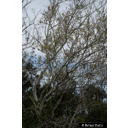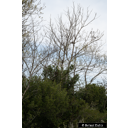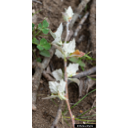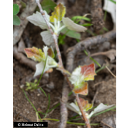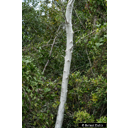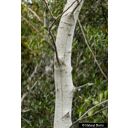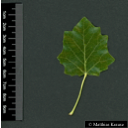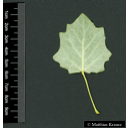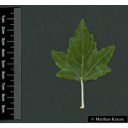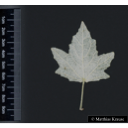Useful information about the taxon (species, subspecies, variety...)
Populus alba L. 1753
Salicaceae
(APG IV)silver-leaf poplar, white poplar
Taxon concept: The Plant List (2014), version 1.1
Distribution: central and southern Europe, Turkey, Palestine, Caucasus, western Siberia, Central Asia, North Africa; naturalised on the British Isles, in Scandinavia, Denmark, North America, New Zealand and South Africa
Populus alba L. - Accepted: Populus alba L. bei Zander 2008; Familie: Salicaceae (Zander 2008)Populus alba L. - Accepted: Populus alba L. bei The Plant List (2010); Familie: Salicaceae (APG III)Populus alba L. - Accepted: Populus alba L. bei The Plant List (2014), version 1.1; Familie: Salicaceae (APG III)Populus alba var. pyramidalis Bunge - Accepted: Populus alba var. pyramidalis Bunge bei The Plant List (2014), version 1.1; Familie: Salicaceae (APG III)Populus alba var. pyramidalis Bunge - Synonym: Populus alba L. bei Zander 2008; Familie: Salicaceae (Zander 2008)Populus alba var. pyramidalis Bunge - Synonym: Populus alba L. 'Pyramidalis' bei Zander 2008; Familie: Salicaceae (Zander 2008)Populus alba L. 'Pyramidalis' - Accepted: Populus alba L. 'Pyramidalis' bei Zander 2008; Familie: Salicaceae (Zander 2008)Populus alba var. pyramidalis Bunge - Accepted: Populus alba var. pyramidalis Bunge bei The Plant List (2014), version 1.1; Familie: Salicaceae (APG IV)Populus alba L. - Accepted: Populus alba L. bei The Plant List (2010); Familie: Salicaceae (APG IV)Populus alba L. 'Pyramidalis' - Accepted: Populus alba L. 'Pyramidalis' bei Zander 2008; Familie: Salicaceae (APG IV)Populus alba L. - Accepted: Populus alba L. bei BfN Checklist Flora DE; Familie: Salicaceae (APG IV)Populus alba L. - Accepted: Populus alba L. bei World Flora Online; Familie: Salicaceae (APG IV)Populus alba L. - Accepted: Populus alba L. bei World Flora Online - APG IV (Angiosperms); Familie: Salicaceae (World Flora Online - APG IV (Angiosperms))
- Difference to related species
- compared to Populus nigra on drier sites
- Flowers
- dioecious species; male and female flowers in catkins
- Flower ecology
- wind-pollinated (anemophilous)
- Life form
- woody, tree
- Leaves
- morphologically variable leaves; silvery-white lower leaf side
- Foliage persistence
- deciduous
- Fruits
- capsule fruit with fluffy seeds
- Fruit ecology
- wind-dispersed (anemochorous)
- Soil conditions
- preferentially on at least ground and temporarily perculating moist, nutrient-rich and alkaline, immature or humus-containing, loose clay and loamy soils
- Natural occurrence (habitat)
- floodplain mixed forests and riparian woodlands, floodplain clearings, screes, constantly flowing Mediterranean rivers, sand dunes; in Germany native in the Upper Rhine Lowland and in floodplains of the Danube; otherwise planted
- Vegetation typ and synecology (plant community)
- temperate to warm-temperate/Mediterranean, mixed mesophytic broad-leaved forests; in associations of the Alno-Ulmion and Paspalo-Agrostidion
- Constraints according soil conditions
- tolerant to drought, wind and high temperatures
- Life span
- long-lived species (to 400 years old)
- Usage
- used as an ornamental tree, as a windbreak and for dune stabilisation; is exploited for phytoremediation (i.e. for environmental decontamination by means of plants); the wood is used for paper production, excelsior, crates, e.g. fruit boxes, and fibre boards
- Bark
- bark of young trees with small black lenticels
Bundesamt für Naturschutz (BfN) (1999-2001 and ongoing): Floraweb - Daten und Informationen zu Wildpflanzen und zur Vegetation Deutschlands. www.floraweb.de.; Erhardt, W., Götz, E., Bödeker, N. & Seybold, S. (2008): Der große Zander. Enzyklopädie der Pflanzennamen. Band 2. Arten und Sorten. Eugen Ulmer KG, Stuttgart (Hohenheim), 18. Aufl., 2103 S.; Haider, M. et al. (2005): Wildbienenkataster. See: https://www.wildbienen-kataster.de; Jäger, E. J. et al. (2007): Rothmaler - Exkursionsflora von Deutschland. Band 5: Krautige Zier- und Nutzpflanzen. Spektrum Akademischer Verlag, Aufl. 31.10.2007: 880.; Ministerium für Ernährung, Landwirtschaft, Umwelt und Forsten, Baden-Württemberg (Hrsg.) (1985): Pflanzenkatalog zur Verbesserung der Bienenweide und des Artenreichtums (Kurztitel: Bienenweidekatalog); Oberdorfer, E. (2001): Pflanzensoziologische Exkursionsflora. Für Deutschland und angrenzende Gebiete. Eugen Ulmer Verlag, Stuttgart, 8., stark überarb. u. erg. Aufl, 1056 S. 978-3-8001-3131-0.; Pritsch, Günter et al. (1985): Bienenweide.. Neumann-Neudamm, Melsungen; Schick, B. & Spürgin, A. (1997): Die Bienenweide. Eugen Ulmer Verlag, Stuttgart, Auflage: 4., völlig neubearb. u. erw. A., 216 S. 978-3800174188.; The International Plant Names Index (2009). Published on the Internet http://www.ipni.org; Courtesy to IPNI, 2009. Exported from IPNI at date: 2009-09-22 20:17:51; Westrich, P. et al. (2018): Die Wildbienen Deutschlands.. Ulmer Verlag ISBN 978-8186-0123-2.;
Diese Webseite verwendet Google Maps, um Karten und Standorte von Pflanzen in den Hohenheimer Gärten anzuzeigen. Dadurch werden unter Umständen Daten an Google weitergeleitet, was mit einer Verarbeitung Ihrer personenbezogenen Daten verbunden sein kann. Die Datenschutzerklärung von Google finden Sie hier: Datenschutzerklärung von Google
| Sex | Standort | Accession number | Planting year | Donation | IPEN | Lat. | Long. |
|---|---|---|---|---|---|---|---|
| Parzelle F | EG-F-125-18137 | 2013 | XX-0-HOH-EG-F-125-18137 | 48,7100270578 | 9,2049955443 |

